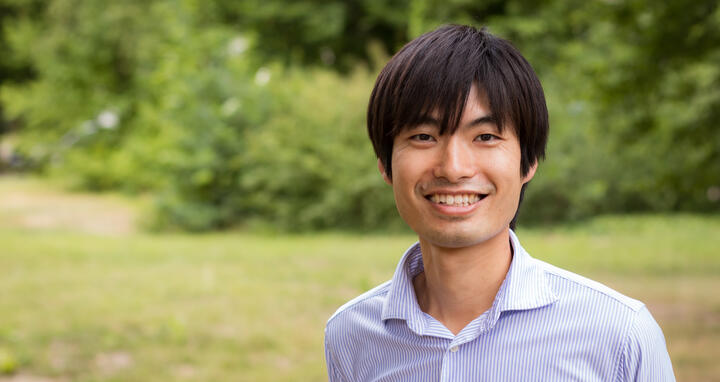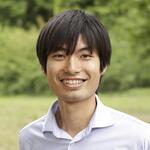How cells sense their surroundings
Cells must be able to recognize, whether the molecules they need to survive – like oxygen and nutrients – are present.
Perception of the outside world is vital to survival, including for cells. “They must be able to recognize, for example, whether the molecules they need to survive – like oxygen and nutrients – are present,” explains Dr. Yoichiro Sugimoto, who began setting up his new lab on the molecular mechanisms of environment sensing in July 2022 at the Max Delbrück Center for Molecular Medicine in the Helmholtz Association (MDC). “This is how the human body adapts to changing environmental conditions,” says the bioscientist, who grew up near Tokyo. His lab forms part of the Berlin Center for Translational Vascular Biomedicine (VasBioBerlin), a scientific network of researchers from the Berlin Institute of Health at Charité (BIH), Charité – Universitätsmedizin Berlin, and the MDC. Sugimoto’s research in Berlin will focus on exploring the molecular basis of oxygen sensing in cells – a process that is still not fully understood.

Cells produce energy by burning nutrients, much like an engine burning fuel. Oxygen is crucial in this process, and low levels of the gas – a condition known as hypoxia – can result in permanent tissue damage. “If oxygen levels drop, cells need to recognize this and react,” says Sugimoto. Within minutes, they adjust their energy consumption, for example by producing fewer proteins. In addition, certain genes may be activated by the hypoxia-inducible factor (HIF) – a group of proteins that only survive under low-oxygen conditions. This can lead over time to the cell producing the hormone EPO, which ensures that more red blood cells are formed to counteract the lack of oxygen.
Working alongside a Nobel laureate
In 2019, three scientists, including Professor Sir Peter J. Ratcliffe of the Francis Crick Institute and the University of Oxford, were awarded a Nobel Prize for their findings on how cells sense and adapt to oxygen availability using the HIF system. Sugimoto was a postdoctoral researcher in Ratcliffe’s lab at that time. There, his work primarily focused on studying how cells regulate protein synthesis according to the oxygen level.
Proteins are synthesized in a process called translation: the RNA of the cells translates the genetic information read from the DNA into an amino-acid blueprint for each protein. This happens after the so-called transcription, by which DNA is copied to RNA carrying the information needed for protein synthesis. “HIF was thought to affect both, transcription and translation”, says Sugimoto.
Above all, we want to investigate how oxygen levels influence all these RNA-mediated processes.
However, a surprising finding of his work in England was that HIF has only a very limited influence on translation. Therefore, the scientist now wants to search for further oxygen-sensitive mechanisms occurring during this process.“RNA is also constantly interacting with other molecules,” explains Sugimoto. This interaction influences not only how much of a particular protein is produced, but also other cellular functions. “Above all, we want to investigate how oxygen levels influence all these RNA-mediated processes,” summarizes Sugimoto.
Even back during his doctoral thesis in Cambridge, England, Sugimoto developed a high-throughput method to find interactions between RNA segments in the living cell. In the process, he realized the importance of various computer-based techniques in the analysis and interpretation of large data sets. He further expanded his data science expertise by working for two years as a management consultant after completing his doctorate.
Getting back to science
But the fundamental questions of biology continued to fascinate him. Sugimoto explains how, as part of Ratcliffe’s team, he learned that one can’t rely solely on existing methods to answer challenging research questions – and this is a lesson he intends to keep in mind going forward: “We want to keep developing innovative high-throughput technologies that can comprehensively measure the interactions and regulatory status of key biological molecules like RNA and proteins,” he says. Data science methods will then be used to analyze and evaluate the large and complex data sets.
He hopes that the knowledge gained from this could find clinical application in the future. “As tumor cells usually grow very quickly, they often don’t get enough oxygen,” he explains. To combat this, the cancer interferes with the cells’ oxygen-sensing mechanisms. The oxygen sensing system is also disrupted in some viral infections and neurodegenerative diseases. The idea, therefore, is that medication could help restore balance to this system.
The research environment and infrastructures at MDC would allow him to tackle such fundamental questions in biology across disciplinary boundaries, Sugimoto says. He recalls that even during the application process for his position at MDC, he received very helpful suggestions from scientists with diverse backgrounds on how to advance his ideas. In addition to the exciting work that awaits him, he is looking forward to exploring the culture and nature of Berlin with his family.
Text: Janosch Deeg
Further information






